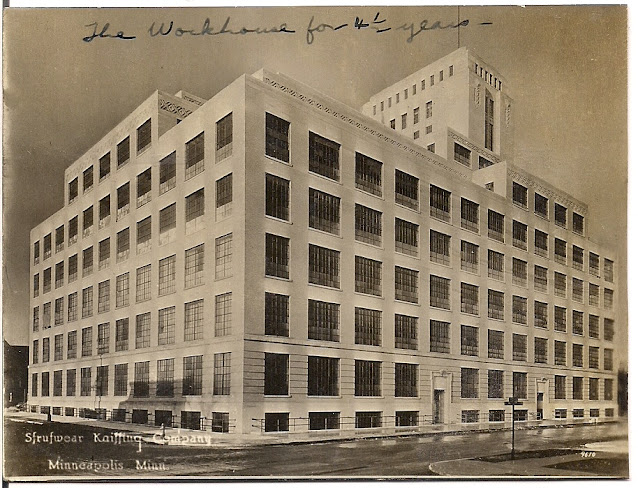Through Ella Swarts (1862 -1899), a paternal 2x great grandmother, I am descended from four Mayflower families. Her maternal great-great grandparents, Amaziah Doty (1756 – 1833) and his wife Bethiah Hamlin (1758 – 1830) provide the links.
Amaziah’s father was Ebenezer Doty, and through his paternal line we can claim three of those Mayflower folks: Edward Doty, a paternal great-great grandfather; Francis Cooke, father of another paternal great-great grandfather (Jacob Cooke); and Stephen Hopkins, father of a paternal great-great grandmother (Damaris Hopkins, wife of Jacob Cooke).Edward Doty (? – 1655, one of my 11x great grandfathers) was one of two indentured servants to Stephen Hopkins, below. Once at Plymouth, he was known as a trouble –maker, involved in numerous disputes and lawsuits in the new colony, which he usually lost. He probably took great joy in the fact that his son married the granddaughter of his former master.
Francis Cooke (1583 – 1663, a 12X great grandfather) was an actual Pilgrim Separatist. His wife’s sister married Jan Lano, whose son Philippe De Lannoy was the progenitor of the Delano family in the U.S. Besides us, other descendants of Stephen Hopkins include Grandma Moses, Orson Welles, and Brian Wilson of the Beach Boys.
Stephen Hopkins (about 1582 – 1644, also a 12x great grandfather) was not a Pilgrim, but was hired by them to assist in governing the new colony; as such, he was one of the signers of the “Mayflower Compact.” Hopkins was shipwrecked off Bermuda in an earlier expedition, and spent time with the Jamestown colony prior to his boarding the Mayflower. It is believed that his shipwreck experience was the inspiration for Shakespeare’s Tempest. The Hopkins are considered one of the First Families of Virginia.
Amaziah Doty’s wife, Bethiah Hamlin connects us to the last of our Mayflower quartet: John Howland (? - 1672, a 10x great grandfather). Howland was another indentured servant (to John Carver, the first governor of the Plymouth Colony), but became a freeman after Carver’s death. The Howlands had ten children, and founded one of the three most prolific Mayflower progenies. Alongside us, their other descendants include Franklin D Roosevelt, George Bush, Sarah Palin, Ralph Waldo Emerson, Henry Wadsworth Longfellow, Brigham Young, and Humphrey Bogart. Others we may count as more distant cousins are Winston Churchill, Richard Nixon, and Gerald Ford, all of whom are descendants of John Howland’s brother Arnold.
Happy Thanksgiving!
Edward Doty and Faith Clarke
John Doty and Elizabeth Cooke
John Doty and Mehitable Nelson
John Doty and Lydia Dunham
Ebeneezer Doty and Mercy Whiton
Amaziah Doty and Bethiah Hamlin
Stephen S Doty and Polly Holmes
Alma Holmes Doty and Stephen Addison Davenport
Henrietta Davenport and Charles Swarts
Ella Swarts and Charles A Burnett
Alfred Nathaniel Burnett and Jennie Arleta Eaton (great grandparents)
Francis Cooke and Hester Mathieu
Jacob Cooke and Damaris Hopkins
Elizabeth Cooke and John Doty... (see above)
also
Francis Cooke and Hester Mahieu
Jacob Cooke and Damaris Hopkins
Mary Cooke and John Rickard
Johanna Rickard and Elisha Whiton
Mercy Whiton and Ebeneezer Doty... (see above)
Stephen Hopkins and Elizabeth Fisher
Damaris Hopkins and Jacob Cooke... (see above)
John Howland and Elizabeth Tilley
Joseph Howland and Elizabeth Southworth
Mercy Howland and Joseph Hamlin'
Southworth Hamlin and Tabitha Atkins
Bethiah Hamlin and Amaziah Doty... (see above)
Happy Thanksgiving!
Edward Doty and Faith Clarke
John Doty and Elizabeth Cooke
John Doty and Mehitable Nelson
John Doty and Lydia Dunham
Ebeneezer Doty and Mercy Whiton
Amaziah Doty and Bethiah Hamlin
Stephen S Doty and Polly Holmes
Alma Holmes Doty and Stephen Addison Davenport
Henrietta Davenport and Charles Swarts
Ella Swarts and Charles A Burnett
Alfred Nathaniel Burnett and Jennie Arleta Eaton (great grandparents)
Francis Cooke and Hester Mathieu
Jacob Cooke and Damaris Hopkins
Elizabeth Cooke and John Doty... (see above)
also
Francis Cooke and Hester Mahieu
Jacob Cooke and Damaris Hopkins
Mary Cooke and John Rickard
Johanna Rickard and Elisha Whiton
Mercy Whiton and Ebeneezer Doty... (see above)
Stephen Hopkins and Elizabeth Fisher
Damaris Hopkins and Jacob Cooke... (see above)
John Howland and Elizabeth Tilley
Joseph Howland and Elizabeth Southworth
Mercy Howland and Joseph Hamlin'
Southworth Hamlin and Tabitha Atkins
Bethiah Hamlin and Amaziah Doty... (see above)




























